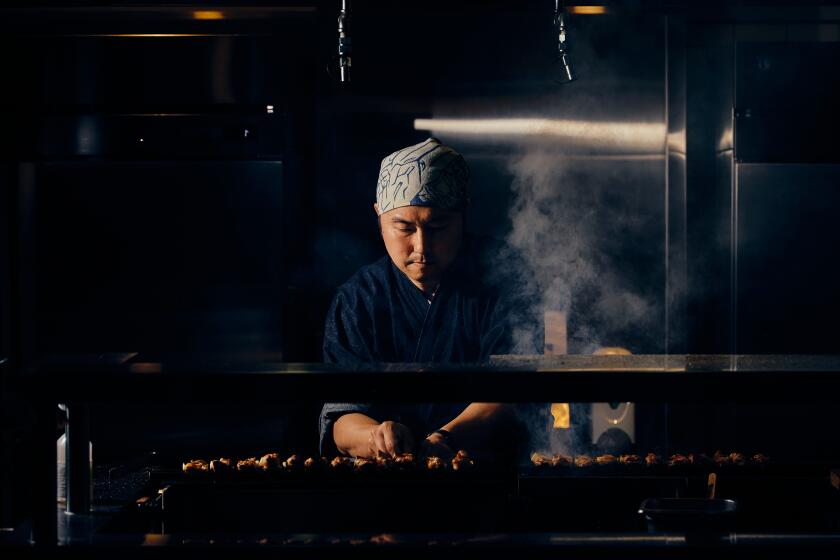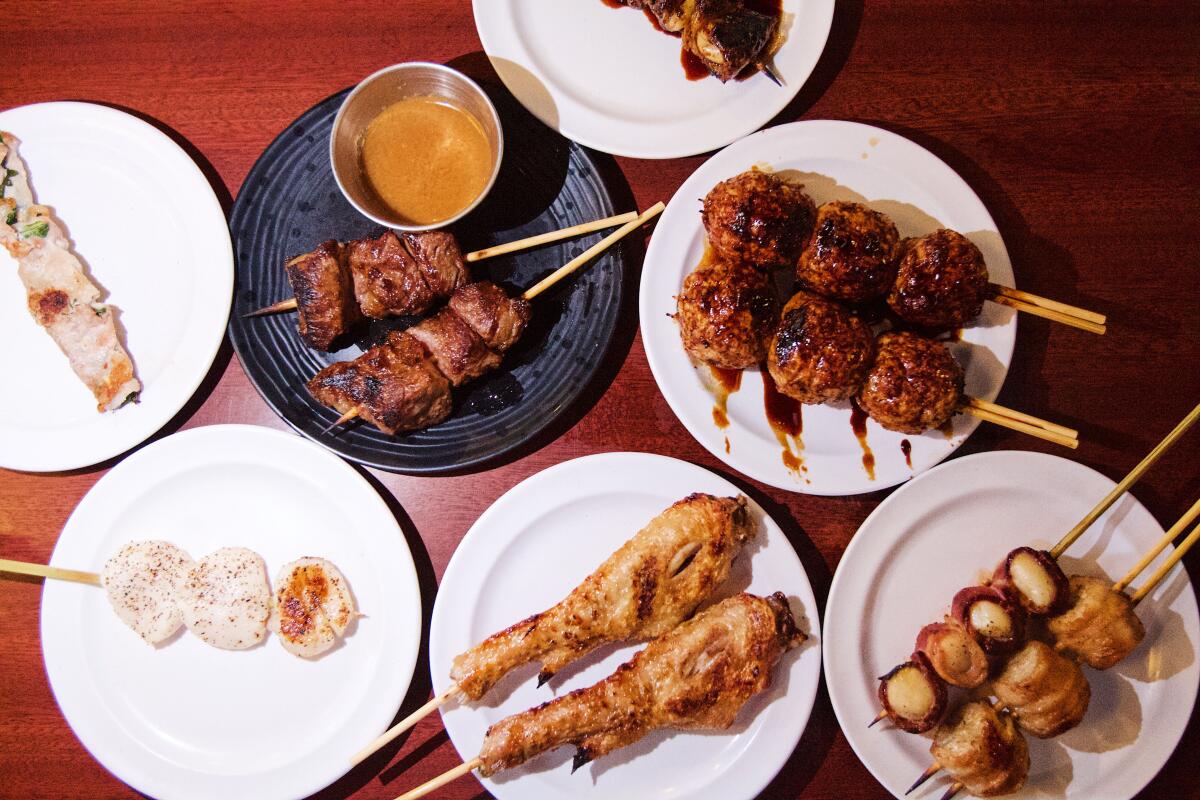
12 of the best spots to try yakitori in Los Angeles, and what to order when you’re there
- Share via
There’s much more to yakitori than grilled chicken on a stick, though that is, at first glance and by name, the long and short of it. One of Japan’s most pervasive cuisines, the simply monikered craft of “grilled chicken” dates back to the 19th century and can be found in street stalls, Michelin-starred fine-dining restaurants and everywhere in between. The cuisine — and its kushiyaki counterpart of other grilled meats and vegetables — requires hours of preparation, a steady hand and dedication.
The social-media enigma is spreading the gospel of Japanese grilled chicken one skewer, pop-up and video at a time.
Nearly every part of the chicken can be grilled and skewered, then arranged whether crudely or artfully, sometimes uniformly or interspersed with vegetables or other varieties of meat or seafood. Yakitori and kushiyaki often come dressed with shio (salt) or tare (a sauce of sugar, soy sauce and sake or mirin), though a new wave of Los Angeles chefs is drawing on local and global inspiration, reimagining what’s hitting the grills and their binchotan charcoal. L.A. is home to traditional-minded yakitori masters as well as more modern spins on the skewers, and both can draw hourslong waits — so make a reservation when possible. Here are some of the region’s best restaurants for yakitori and kushiyaki, and what to order when you get there.
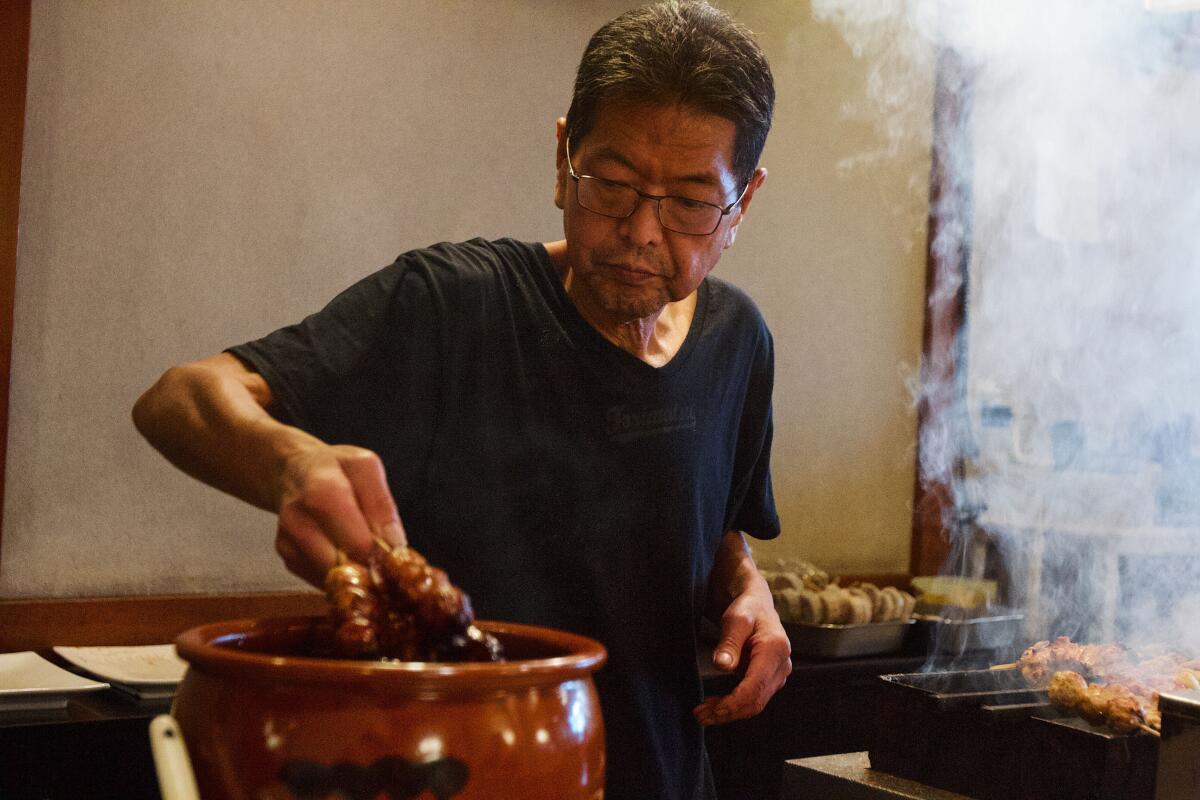
Torimatsu
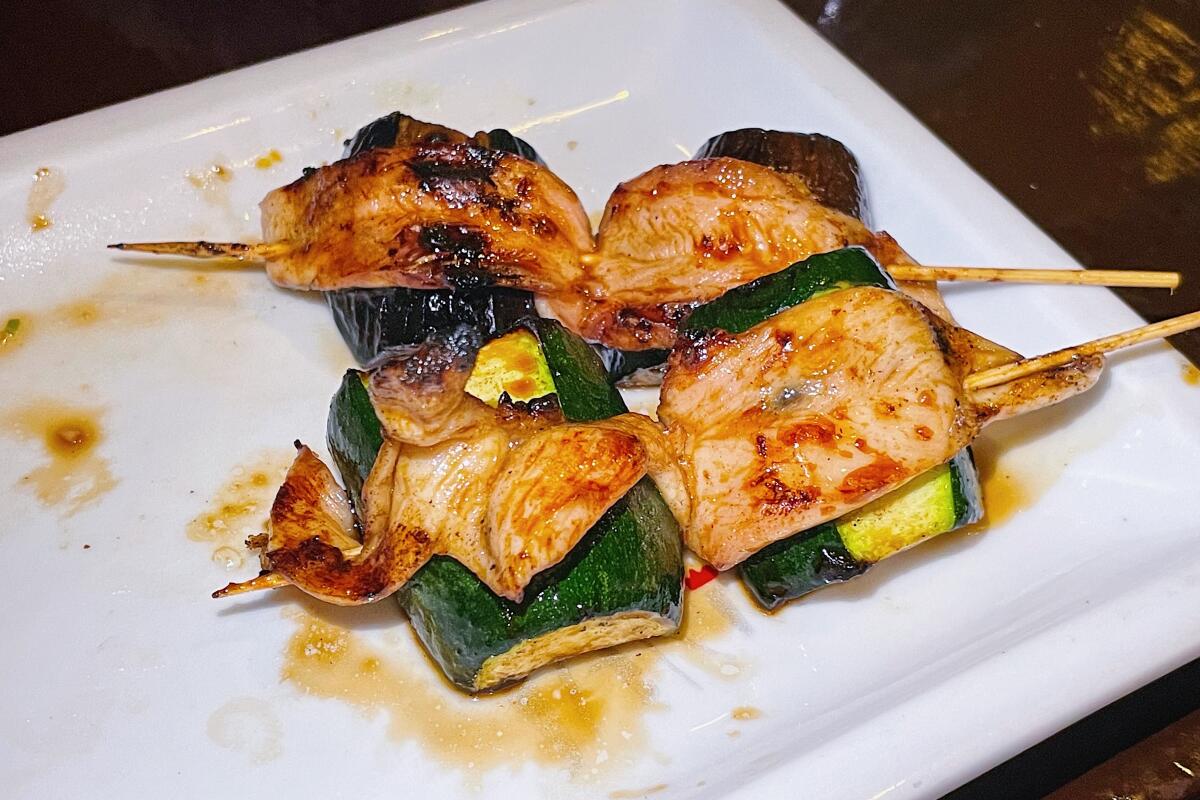
Yakitoriya
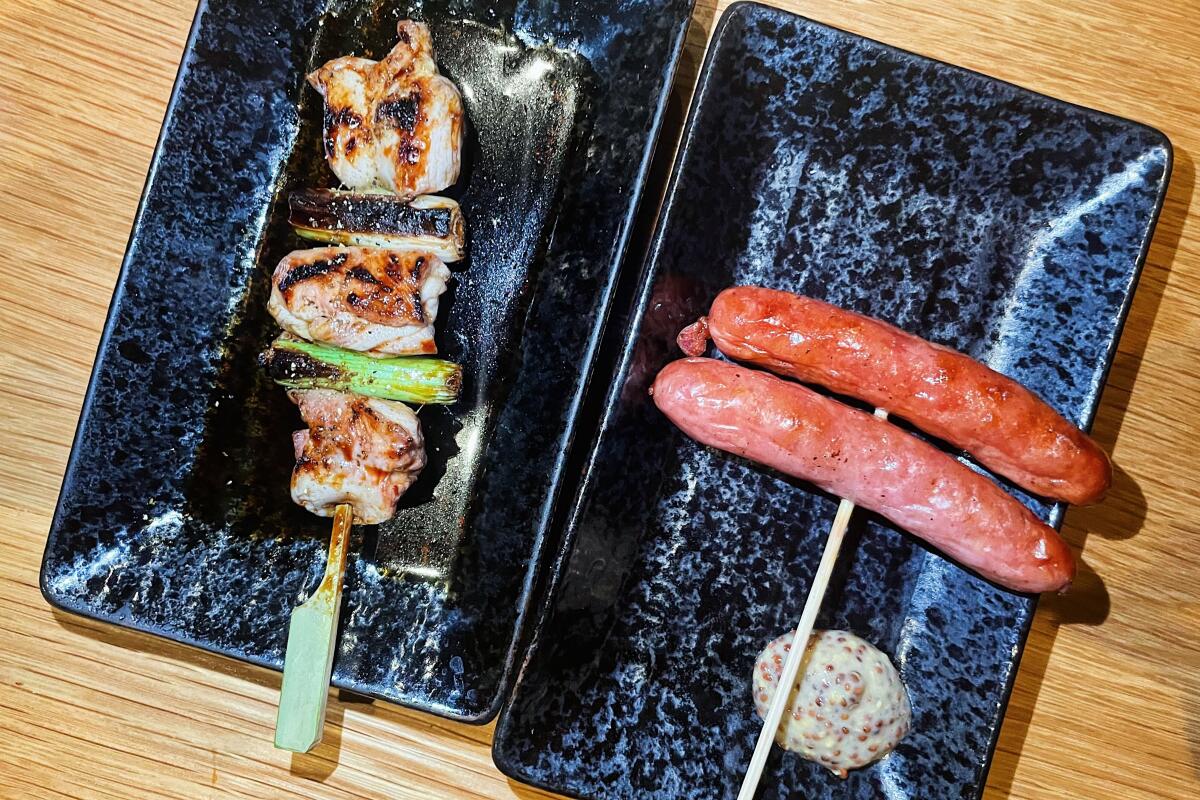
n/soto
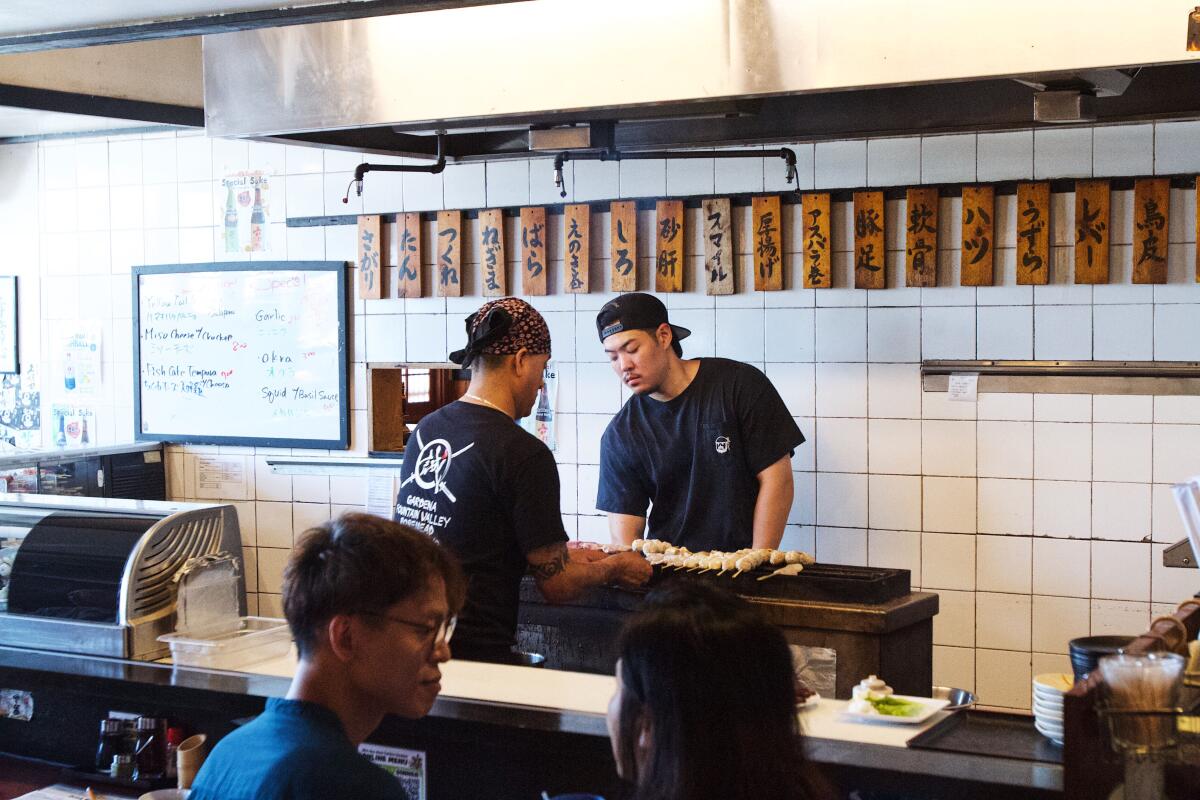
Shin-Sen-Gumi Yakitori
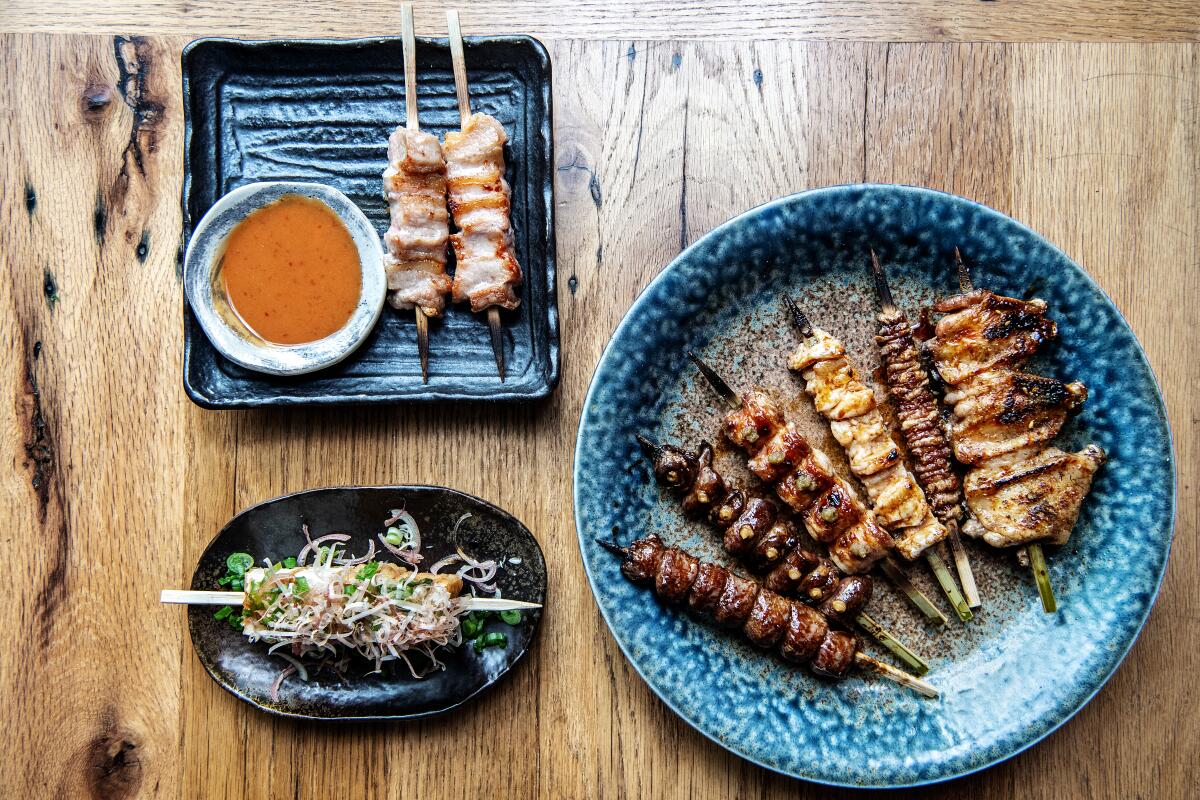
Tsubaki
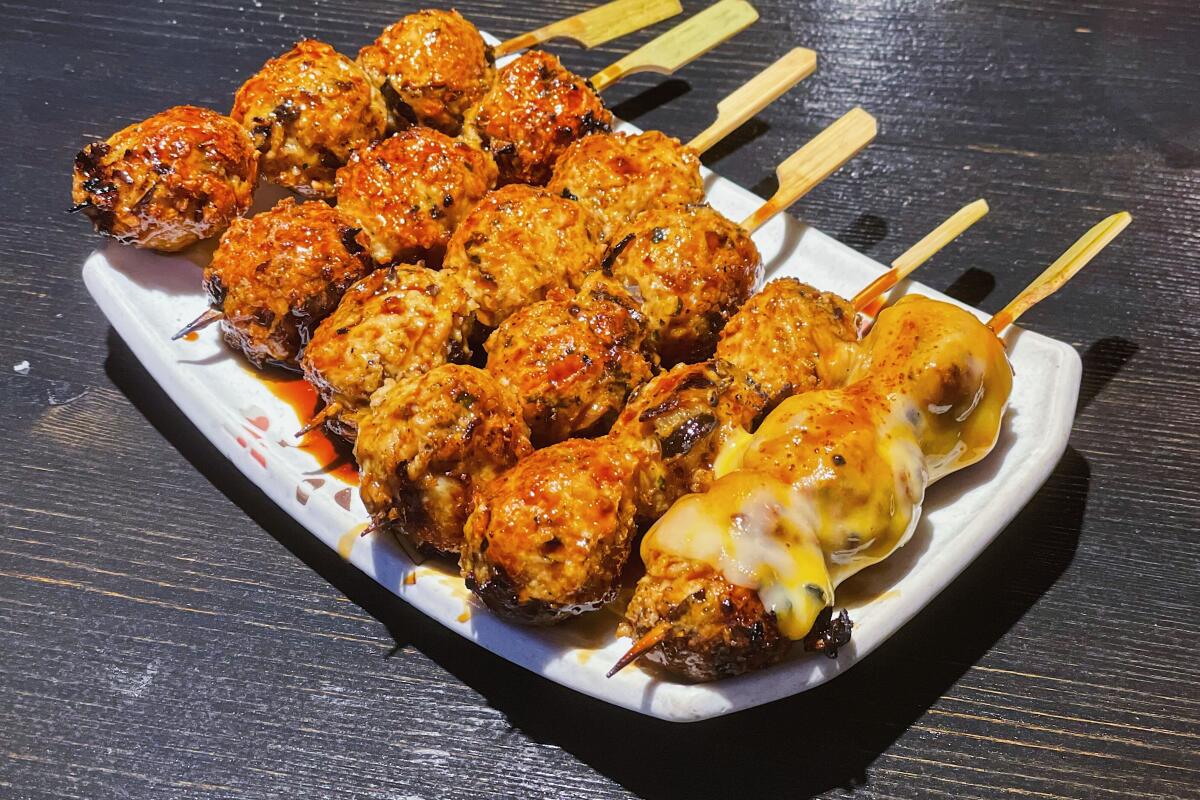
Torihei
But the grilled skewers are central to Torihei, each a cosmos unto itself. There are smoky tomatoes in garlic sauce, incredibly soft hearts with fresh lemon and a light chew to them, tender chicken breasts under squiggles of ume paste and slivers of shiso, and excellent pork-belly-wrapped tomatoes buried in bonito flakes. When it comes to yakitori the house specialty, however, is the tsukune, available three ways. The light-as-air meatballs are made with a secret blend of chicken meat, its cartilage, onion and herbs for pops of texture and flavor, and its outer sphere sports edges grilled golden brown. Three come stacked on a skewer and can be enjoyed simply with tare, under a blanket of melted cheese, or alongside a small ramekin of poached egg for a richer dunk and coating. Why choose when you can order them all?

Torigoya
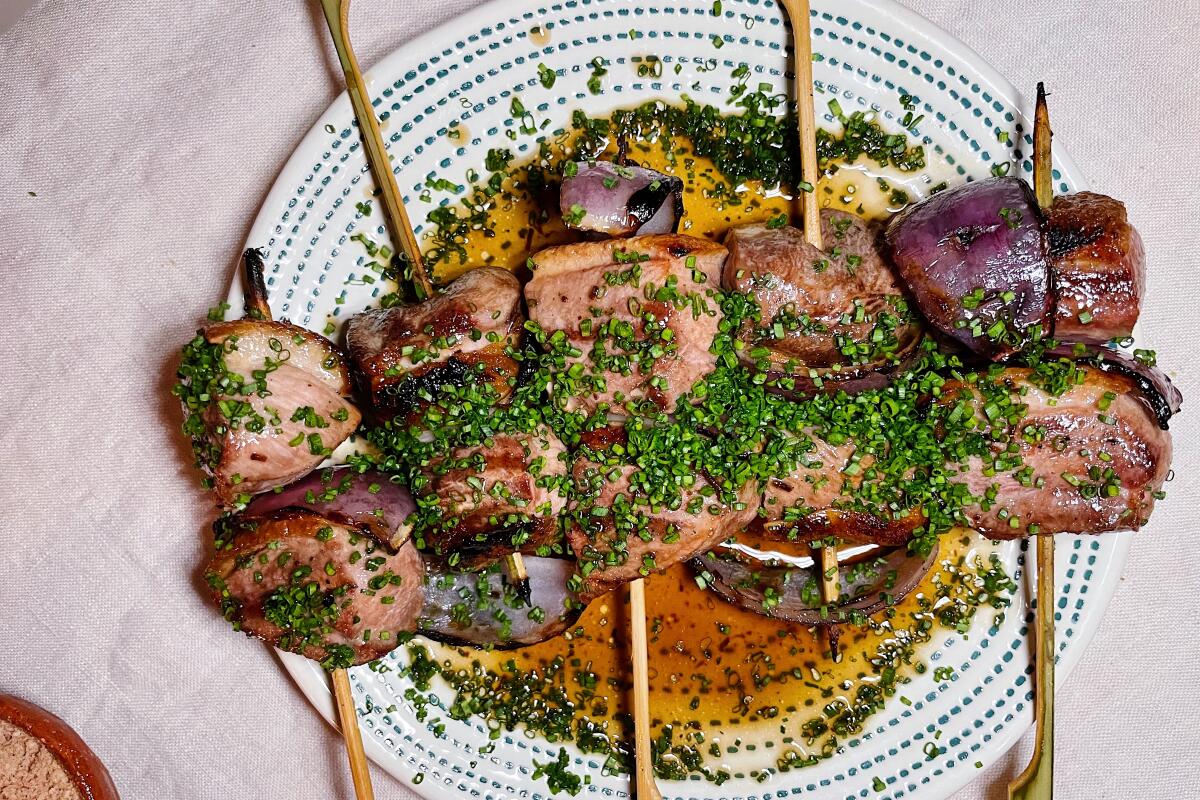
Isla

Robata Jinya
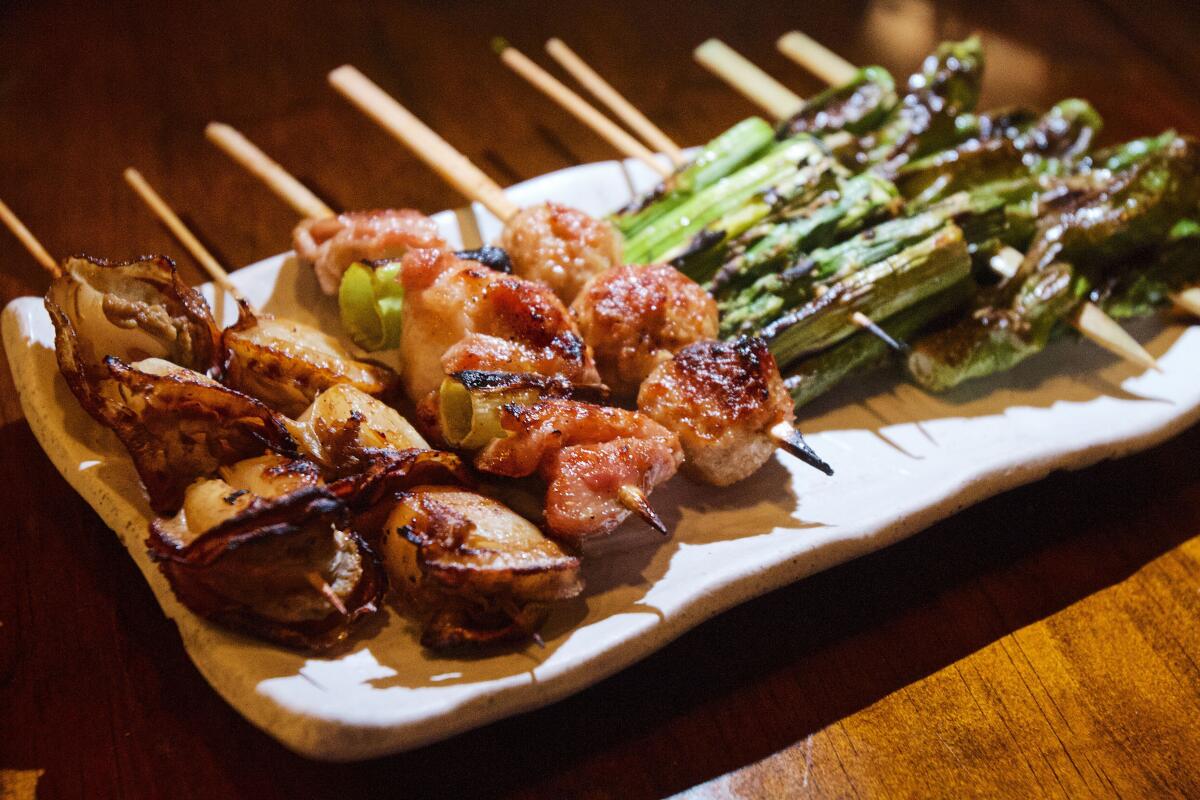
Izakaya Bizan
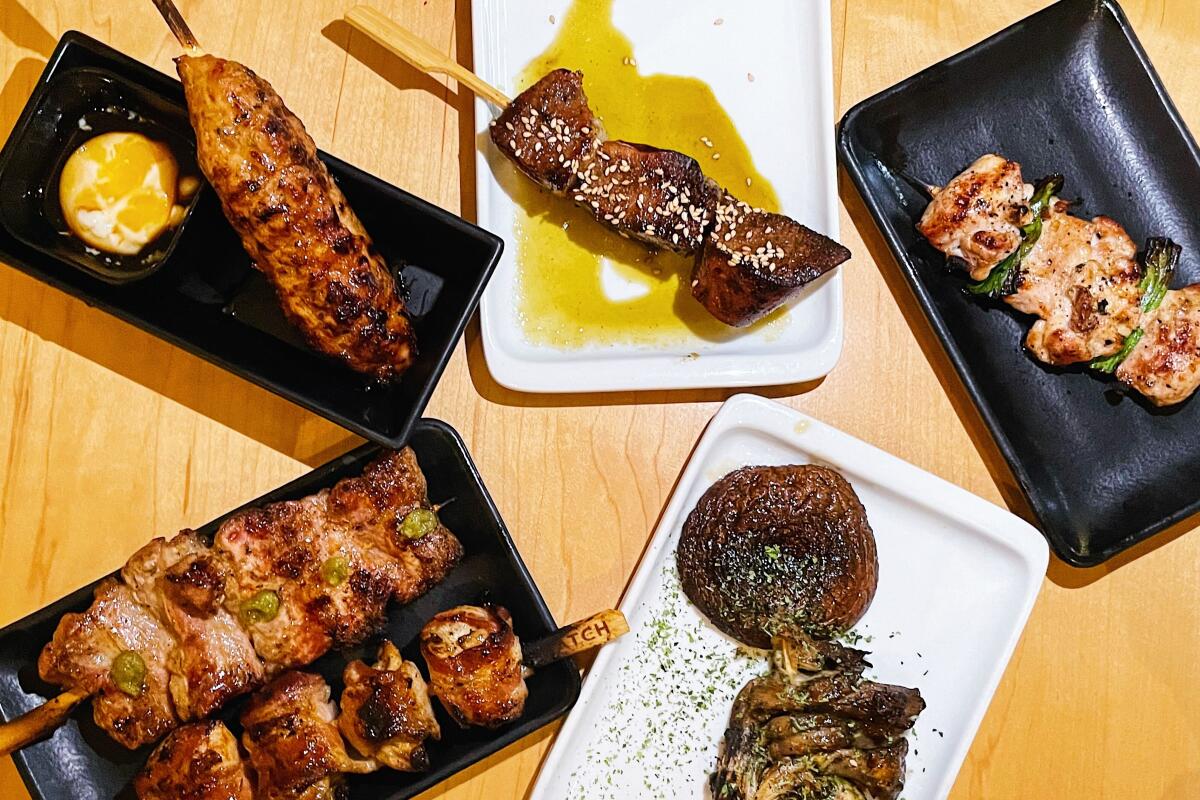
Hatch
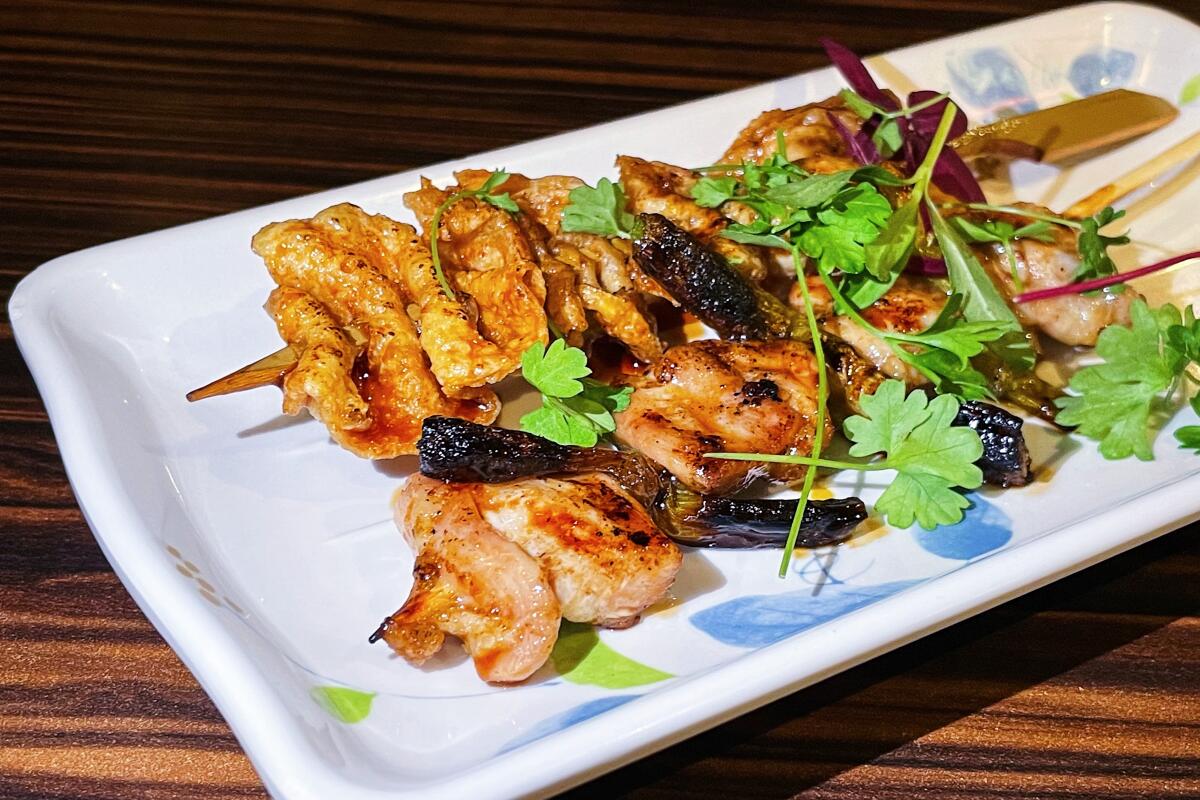
No. 1 Kazoku
Eat your way across L.A.
Get our weekly Tasting Notes newsletter for reviews, news and more.
You may occasionally receive promotional content from the Los Angeles Times.
